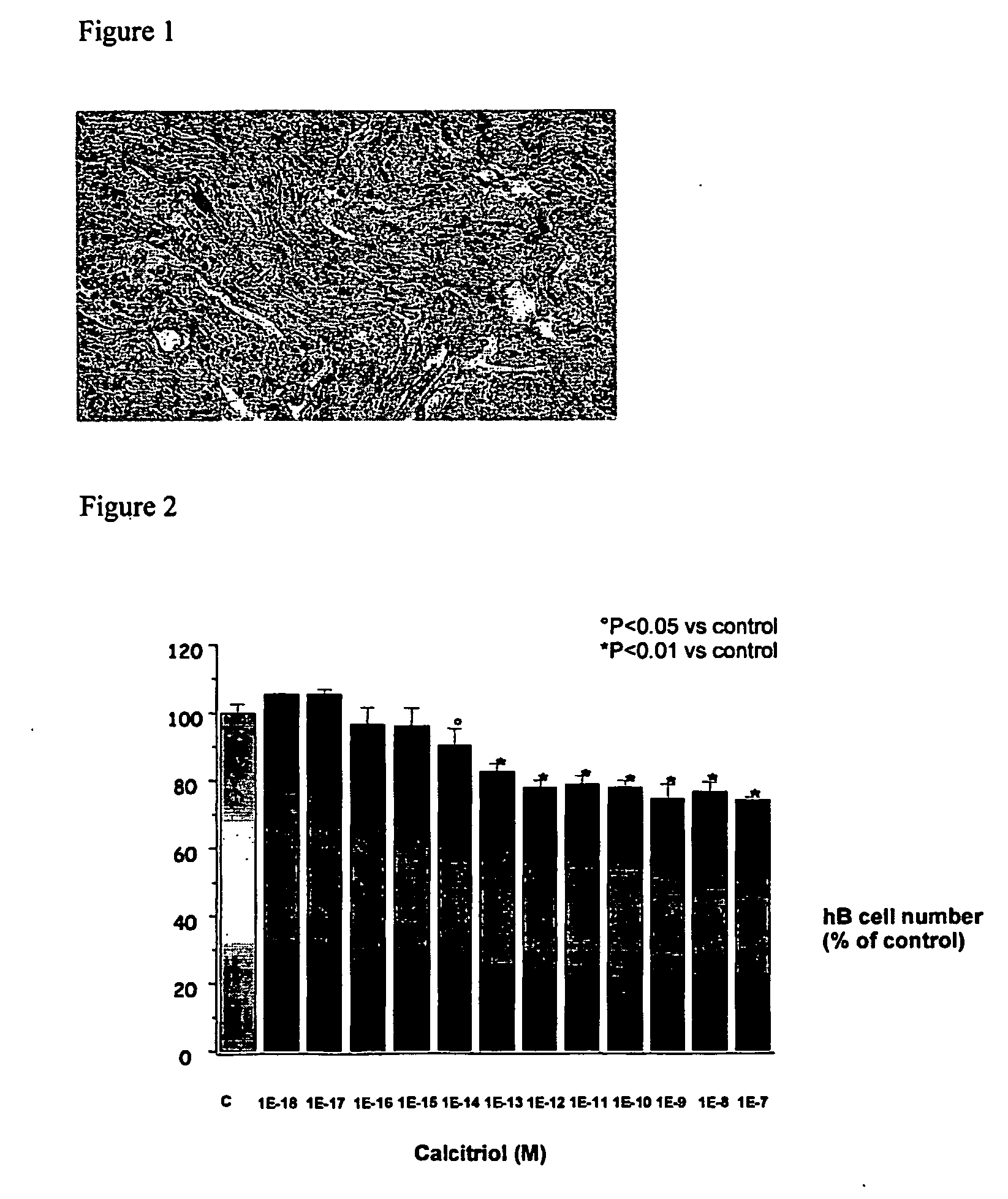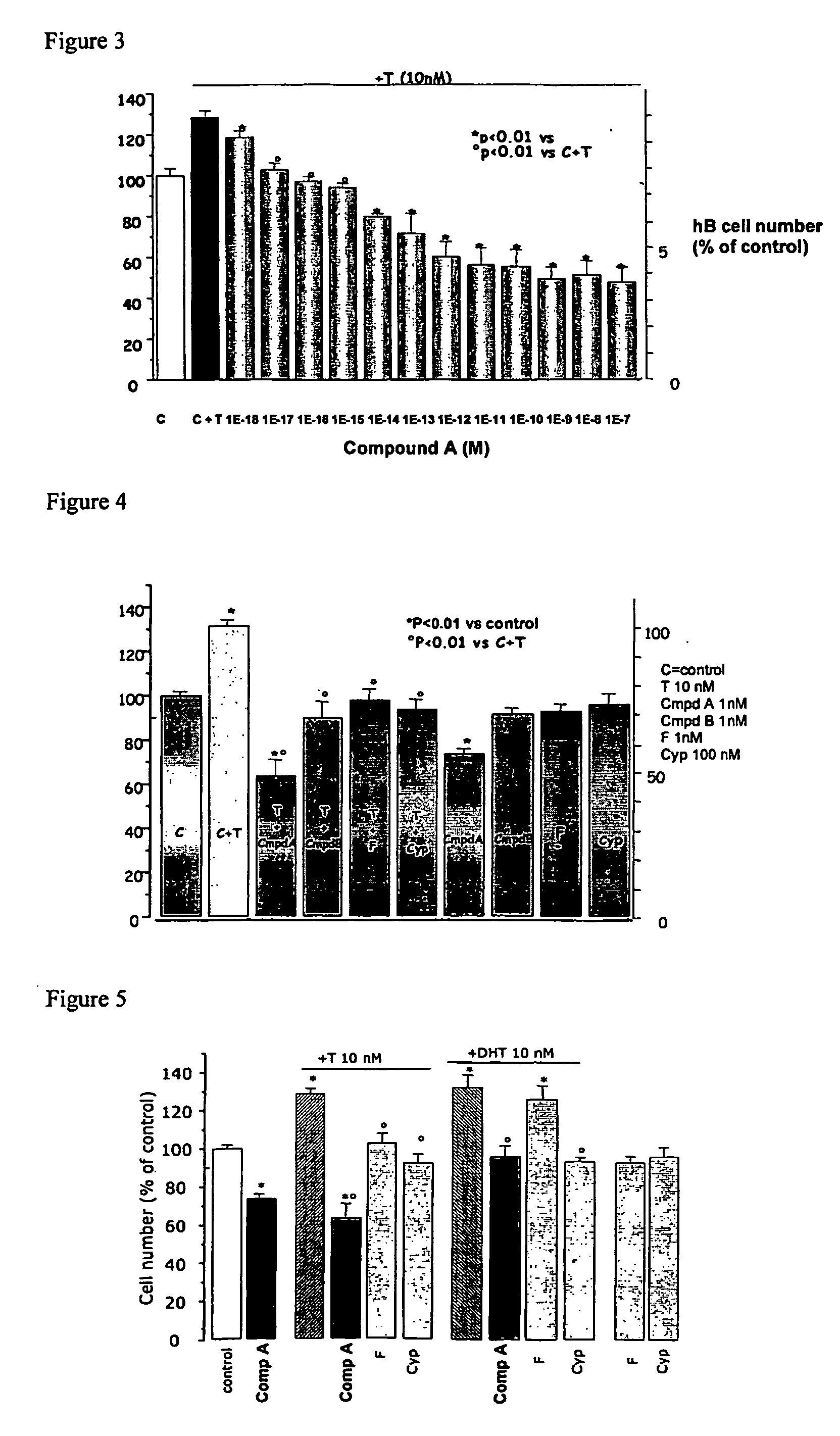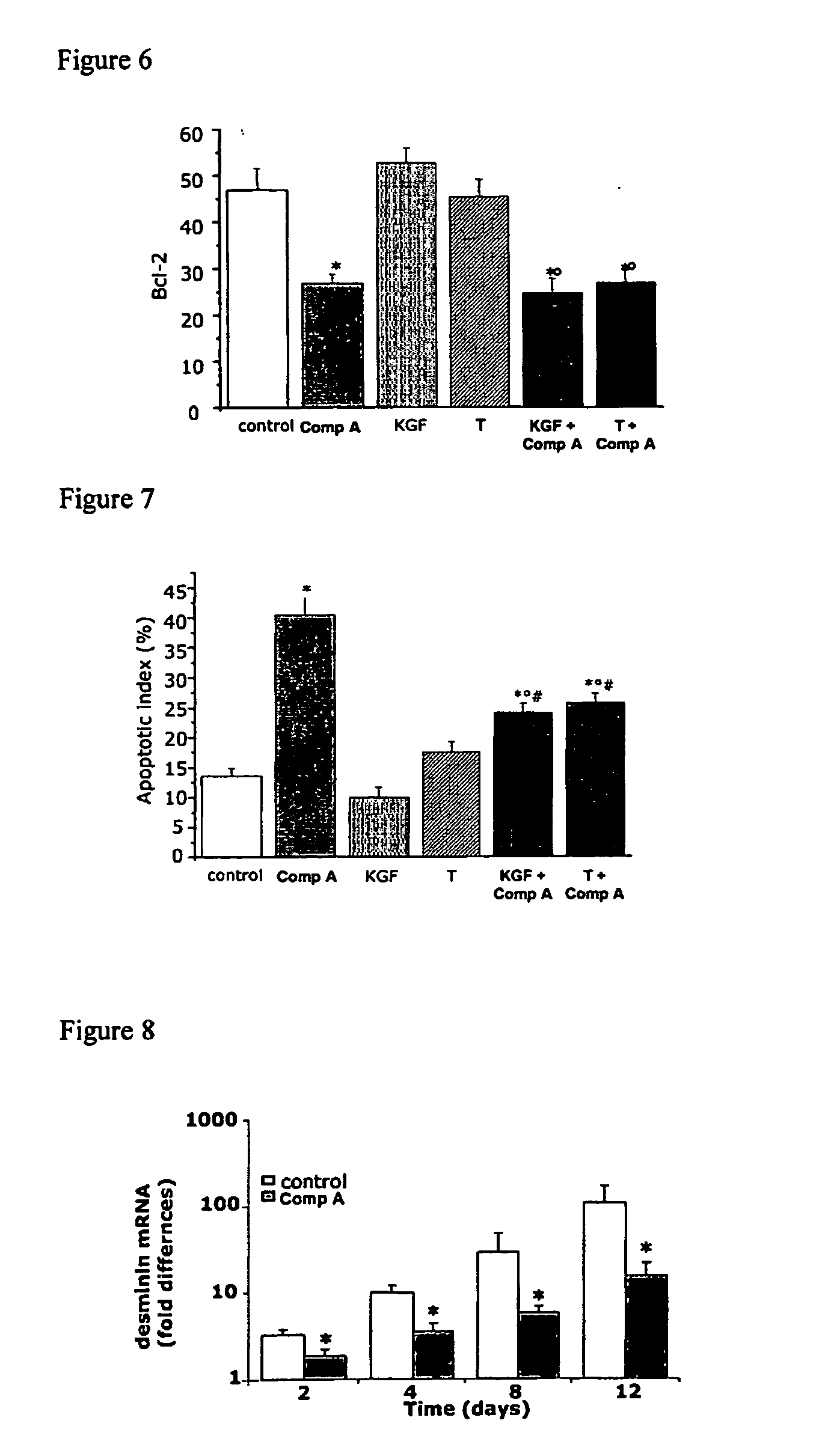Methods for treating bladder dysfunction
a bladder and ureteral technology, applied in the field of morphological bladder changes, can solve the problems of undiscovered ideal treatment of these symptoms, limited clinical utility of some available agents, and profound negative impact on their quality of life, and achieve the effect of stimulating growth and inhibiting the basal lining
- Summary
- Abstract
- Description
- Claims
- Application Information
AI Technical Summary
Benefits of technology
Problems solved by technology
Method used
Image
Examples
example 1
Synthesis of 1,3-Di-O-acetyl-1,25-dihydroxy-16,23Z-diene-26,27-hexafluoro-19-nor-cholecalciferol(1)
The starting material 1,25-dihydroxy-16,23Z-diene-26,27-hexafluoro-19-nor-cholecalciferol can be prepared as described in U.S. Pat. No. 5,428,029 to Doran et al. 3 mg of 1,25-dihydroxy-16,23Z-diene-26,27-hexafluoro-19-nor-cholecalciferol was dissolved in 0.8 ml of pyridine, cooled to ice-bath temperature and 0.2 ml of acetic anhydride was added and maintained at that temperature for 16 h. Then the reaction mixture was diluted with 1 ml of water, stirred for 10 min in the ice bath and distributed between 5 ml of water and 20 ml of ethyl acetate. The organic layer was washed with 3×5 ml of water, once with 5 ml of saturated sodium hydrogen carbonate, once with 3 ml of brine then dried (sodium sulfate) and evaporated. The oily residue was taken up in 1:6 ethyl acetate-hexane and flash-chromatographed using a stepwise gradient of 1:6, 1:4 and 1:2 ethyl acetate-hexane. The column chromato...
example 2
Synthesis of 1,3-Di-O-acetyl-1,25-Dihydroxy-16-ene-23-yne-26,27-hexafluoro-19-nor-cholecalciferol (2) and 1,3,25-Tri-O-acetyl-1,25-Dihydroxy-16-ene-23-yne-26,27-hexafluoro-19-nor-cholecalciferol (3)
The starting material 1,25-dihydroxy-16-ene-23-yne-26,27-hexafluoro-19-nor-cholecalciferol can be prepared as described in U.S. Pat. Nos. 5,451,574 and 5,612,328 to Baggiolini et al. 314 mg (0.619 mmole) of 1,25-dihydroxy-16-ene-23-yne-26,27-hexafluoro-19-nor-cholecalciferol was dissolved in 1.5 ml of pyridine, cooled to ice-bath temperature, and 0.4 ml of acetic anhydride was added. The reaction mixture was kept at room temperature for 7 hours and then for 23 hours in a refrigerator. It was then diluted with 10 ml water and extracted with 30 ml of ethyl acetate. The organic extract was washed with water and brine, dried over sodium sulfate and evaporated. The residue was FLASH chromatographed on a 10×140 mm column with 1:6 and 1:4 ethyl acetate-hexane as the mobile phase to give 126 mg...
example 3
Synthesis of 1,3-Di-O-acetyl-1,25-dihydroxy-16-ene-23-yne-cholecalciferol (4)
A 10-mL round-bottom flask was charged with 40 mg of 1,25-dihydroxy-16-ene-23-yne-cholecalciferol. This material was dissolved in 1 mL of pyridine. This solution was cooled in an ice bath then 0.3 mL of acetic anhydride was added. The solution was stirred for 30 min, then refrigerated overnight, diluted with water and transferred to a separatory funnel with the aid of 10 mL of water and 40 mL of ethyl acetate. The organic layer was washed with 4×20 mL of water, 10 mL of brine passed through a plug of sodium sulfate and evaporated. The light brown, oily residue was taken up in 1:9 ethyl acetate-hexane then flash chromatographed on a 10×130 mm column using 1:9 ethyl acetate-hexane as mobile phase for fractions 1-5, 1:6 for fractions 6-13 and 1:4 ethyl acetate-hexane for fractions 14-20 (18 mL fractions). Fractions 14-19 contained the main band with Rf0.15 (TLC 1:4). Those fractions were pooled and evaporate...
PUM
| Property | Measurement | Unit |
|---|---|---|
| tension | aaaaa | aaaaa |
| frequency | aaaaa | aaaaa |
| chemical characterization | aaaaa | aaaaa |
Abstract
Description
Claims
Application Information
 Login to View More
Login to View More - R&D
- Intellectual Property
- Life Sciences
- Materials
- Tech Scout
- Unparalleled Data Quality
- Higher Quality Content
- 60% Fewer Hallucinations
Browse by: Latest US Patents, China's latest patents, Technical Efficacy Thesaurus, Application Domain, Technology Topic, Popular Technical Reports.
© 2025 PatSnap. All rights reserved.Legal|Privacy policy|Modern Slavery Act Transparency Statement|Sitemap|About US| Contact US: help@patsnap.com



